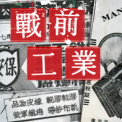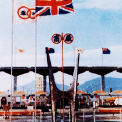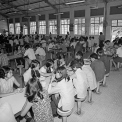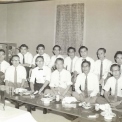Company Name: Central Textiles Limited
Year of Founding: 1949
Mainstream Products: Yarn, Woven Fabric, Knitted Fabric
Brief History:
Central Textiles Limited is a third generation family-run business that has been running for over 50 years. Founder Wu Wenzheng moved from Shanghai to Hong Kong to establish Central Fabrics Mill. In 1957, he expanded the business and established Central Yarn Mill. The company's business of weaving and spinning has been passed on from generation to generation.
During the early 1950s, Wu Wenzheng established Central Fabrics Mill in To Kwa Wan. The mill produced woven fabric such as greige fabric, twill and khaki, etc., and exported to England and Southeast Asia. In 1957, the mill relocated to a 5-storey plant on Castle Peak Road in Tsuen Wan. Central Yarn Mill was then established for the expansion of its weaving production. The mill would import cotton from India, Pakistan and USA to produce cotton yarn for the fabric mill's further process, such as producing tarpulin, or to supply to other local weaving plants. The company's yarn was sold under its trademarks Double Happiness brand, Dual Cats brand and Fortune brand.
In 1962, in order to expand its production, the company moved the mills from Castle Peak Road to Sha Tsui Road. At this time the mills were operating around the clock, initially with two 12-hour shifts, and later three 8-hour shifts. The company also provided living quarters for its workers, with 38 flats in walk-up buildings just opposite the Tsuen Wan Town Hall now. The quarters were provided free of charge to 200 to 300 workers. Shuttle buses were also provided to workers without quarters, running between the mills and Tuen Mun, Kwun Tong and other locations.
During 1967-68, the company expanded to include knitted fabric's production and sales, with dyeing production followed, so that the yarn would first be dyed before weaving. However, in the mid 1980s, Hong Kong government implemented its environmental protection policy. With no land to build sewage treatment facilities, the company decided to close down its knitting production, yet maintained the production of cotton yarn and woven fabrics. In 1989, Central Fabrics moved to Kong Nam Industrial Building on Castle Peak Road for the expansion of its production, while Central Yarn remained at Sha Tsui Road.
The company's thriving business relies on constantly improving its machinery and products. Since the 1970s, to improve its technical expertise, the company sent employees to Europe and Japan to learn more about the latest technology in weaving machines. It then introduced new machines to its production so as to produce new yarns and fabrics. For instance, after the company learned about elastic yarn production in Japan, it bought the necessary machines from Japan and made improvements on them. Then in 1990s the company became the first mill capable of producing elastic yarns, which the company used to produce stretch denim. With this new technology, the company was able to expand from white cloth weaving, khaki and canvas production to also include denim in 2004.
Since the 2000s, the company launched actively promotions targeting brand name fashion houses. In 2005, the company took part at the French Fashion Show and showcased its fabrics there. The company also submitted tenders to the government to sell special function fabrics in order to increase its sales. In 2010, the company ended its spinning mill in Hong Kong and relocated that to mainland China. Since then the company has ceased production of cotton yarn spinning in Hong Kong, but maintained the production of woven fabrics and denim.





